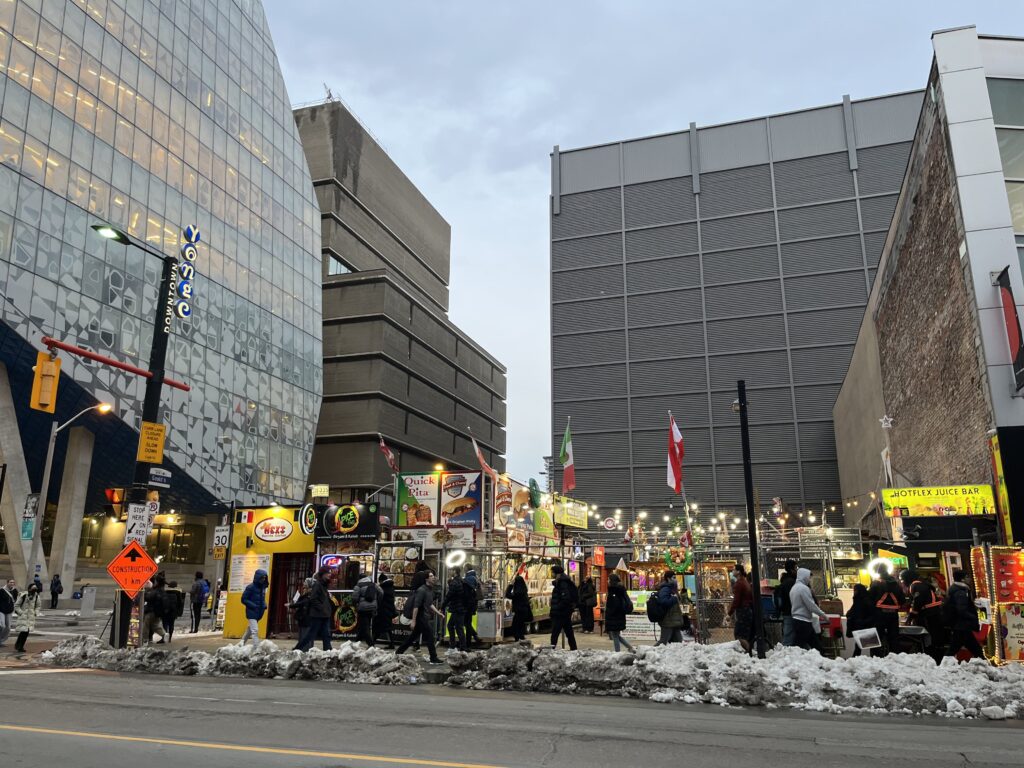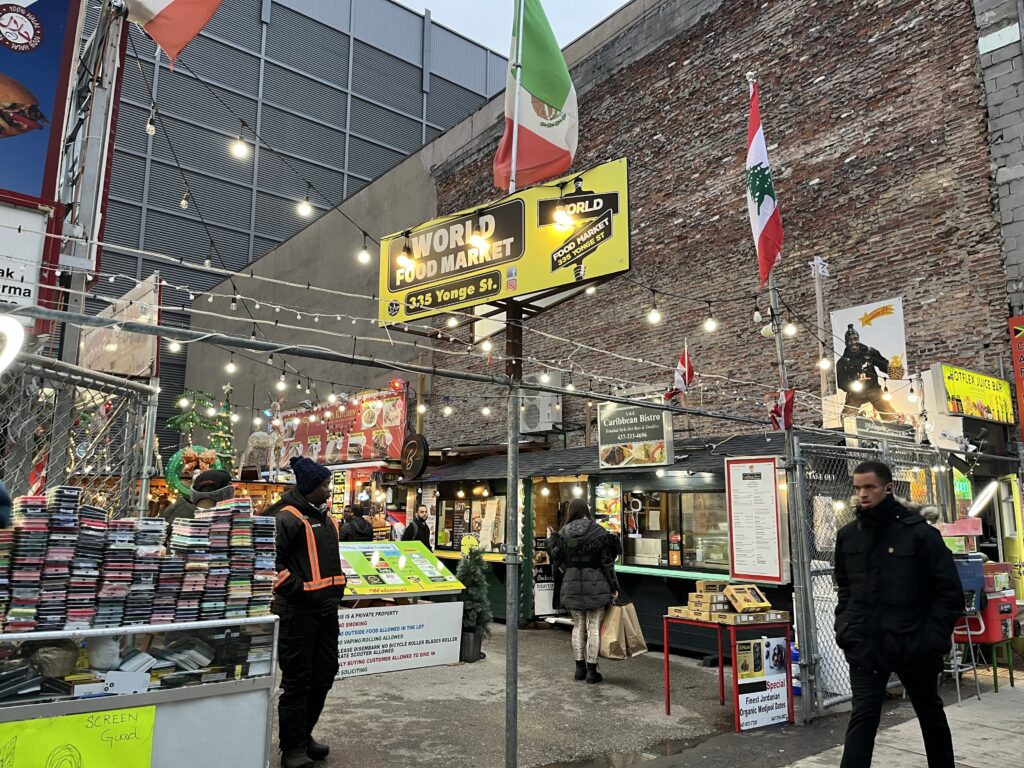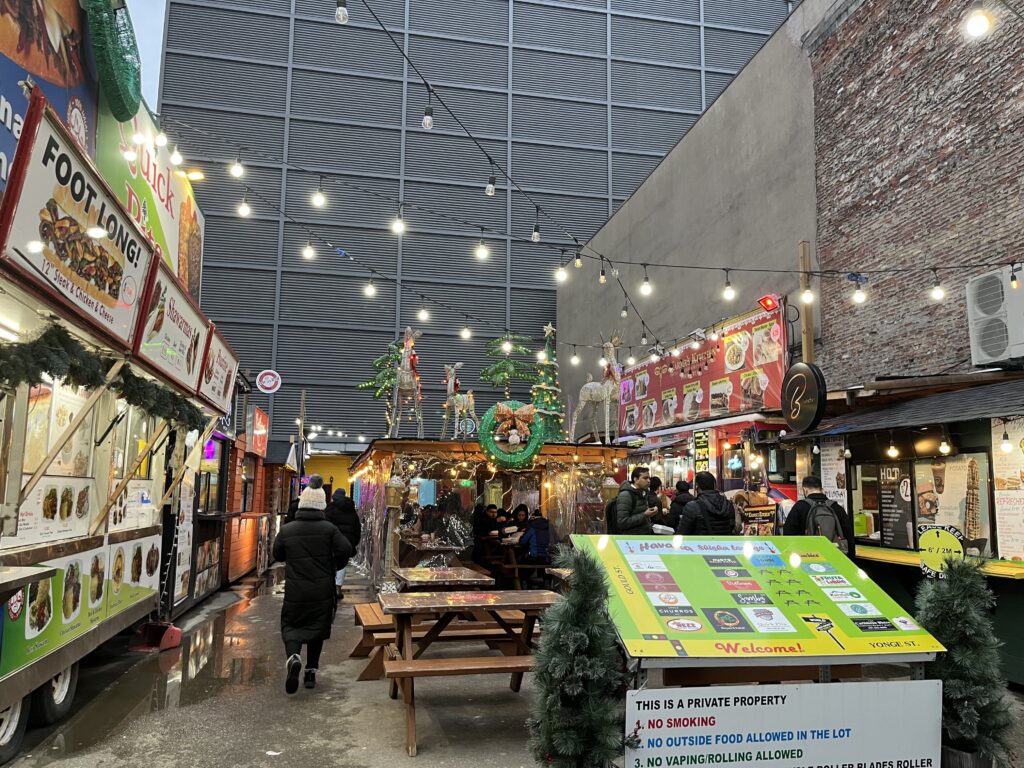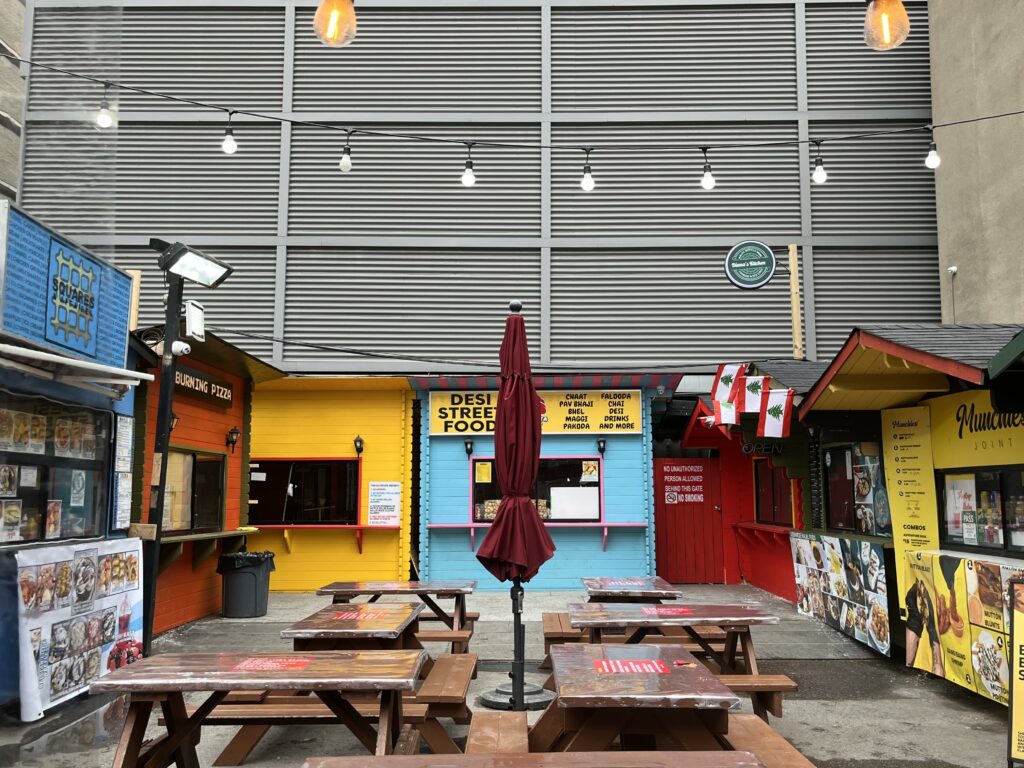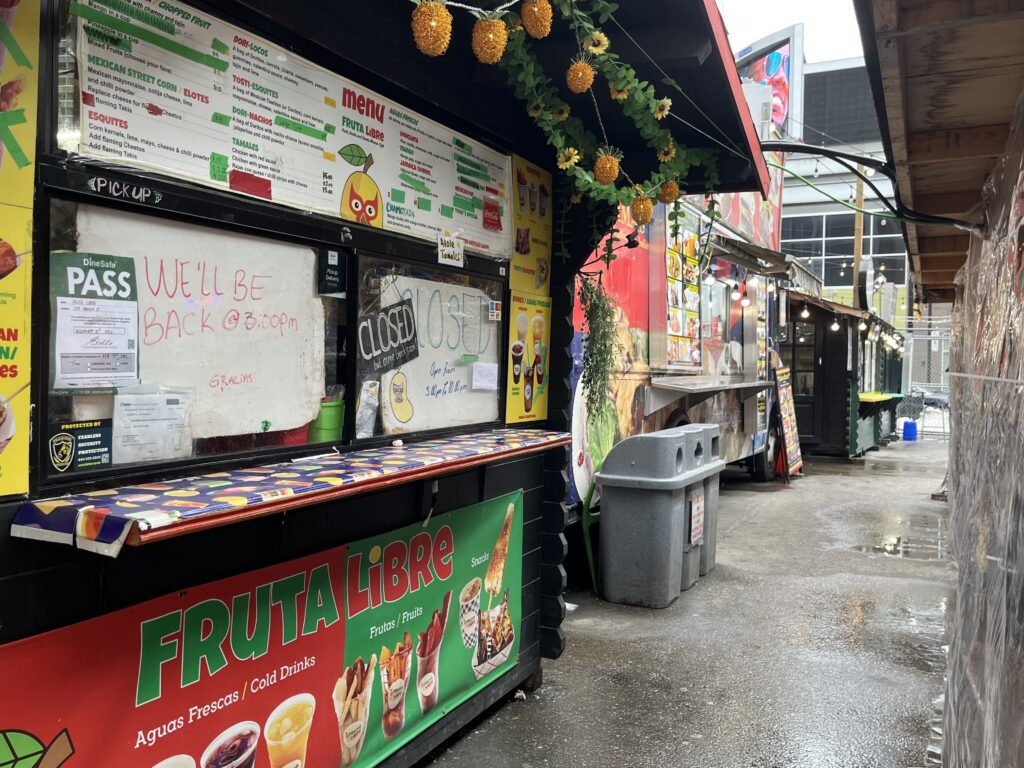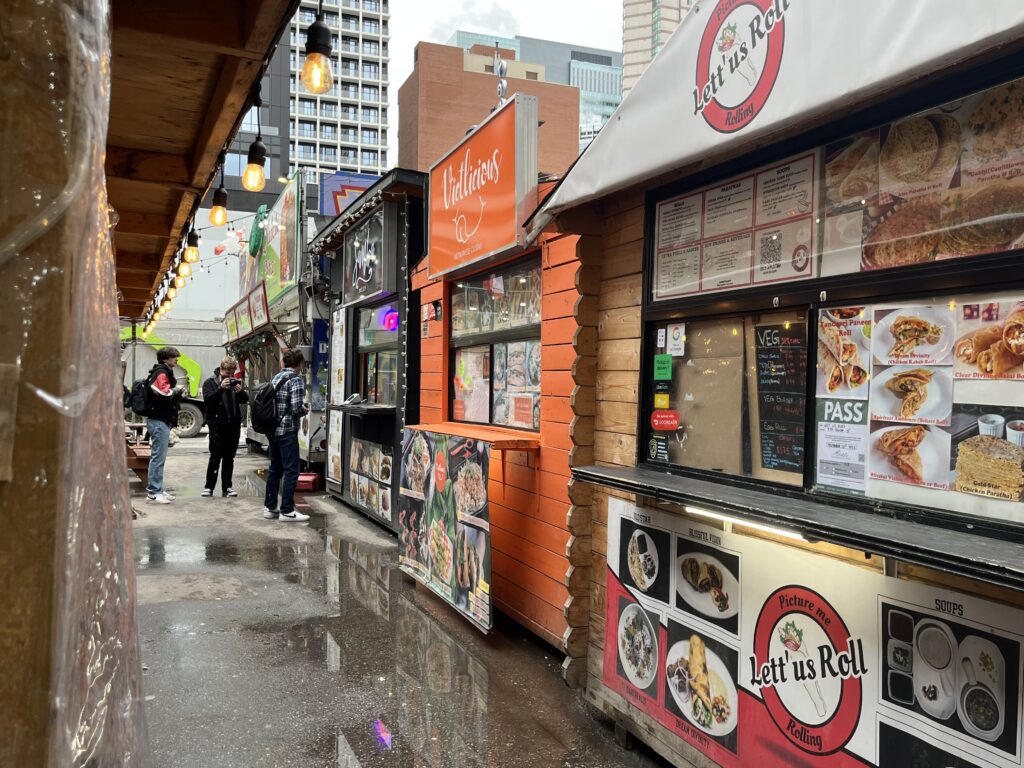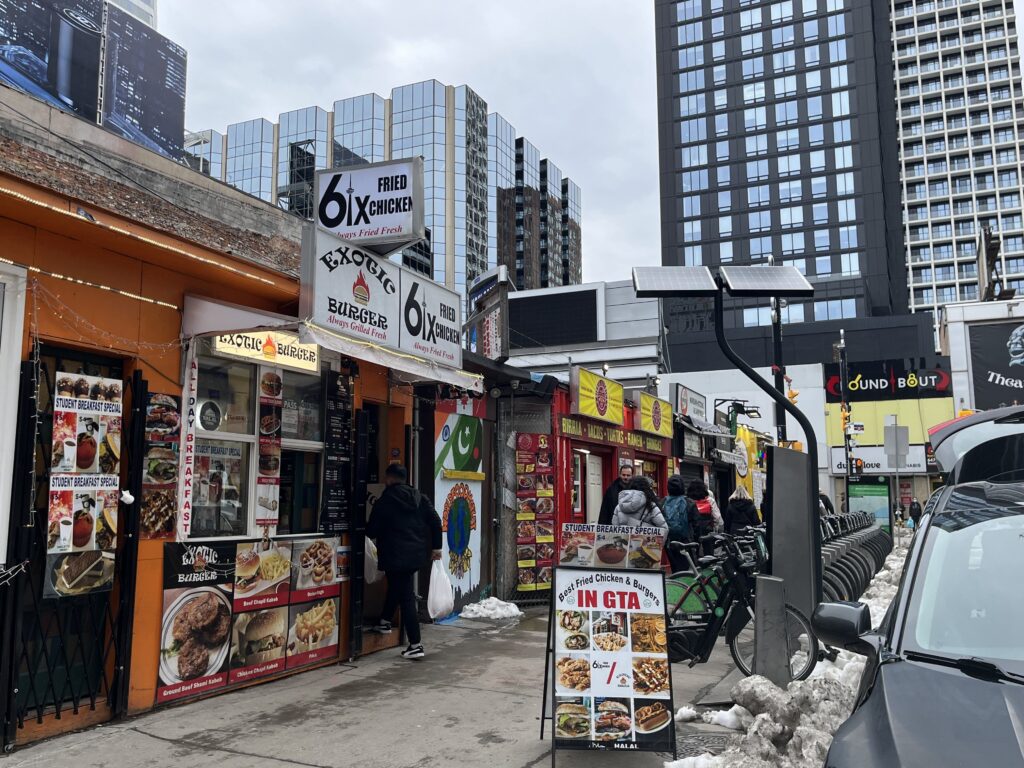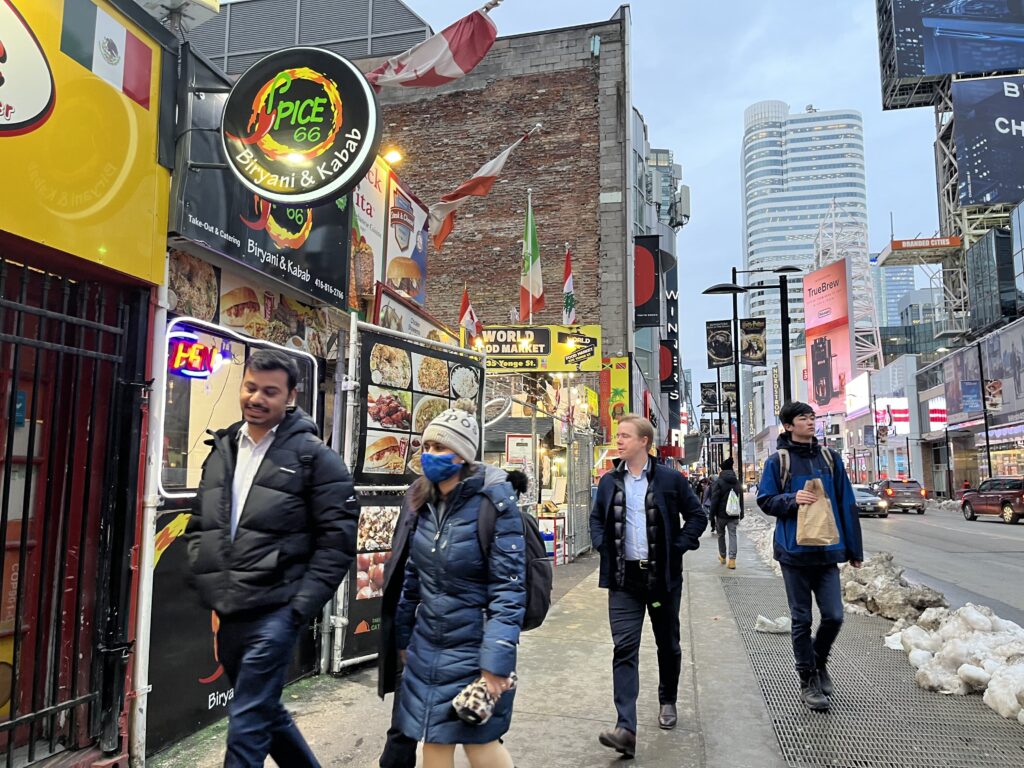By Emma Reynolds
It’s not uncommon to hear the World Food Market before you see it, courtesy of the fridge-size speakers that blast every music genre, from pop to Latin to Afrobeat. The outdoor eatery is hard to miss, surrounded by soaring buildings that reach far above the tiny community.
The market is a jumble of mismatched shipping containers that line the sidewalk, set beside each other in no particular pattern. The colourful kiosks form a mini food village, each adorned with decorations that make them resemble proud little homes. Some use flowers and vines to freshen up their booths, while others have small flags. String lights hang in a loose crisscross pattern above the centre of the market where a wooden canopy provides shelter from rain and snow.
“It has become a landmark that everyone enjoys,” said Khalil Assaad, owner of the market. “Students, couples and families all come to enjoy the cozy and safe atmosphere.”
The World Food Market is one of very few outdoor food markets in Toronto and the only one that is open year-round. However, the market’s reign will come to an end in a year or two because the site is slated to be developed into an apartment building, bringing this landmark’s chapter to an abrupt conclusion.
The market features 23 stalls that serve food from all over the world, from Mexican tacos and burritos to vegan poutines and stuffed Himalayan momos. Most dishes cost under $10, making it a popular destination. The market is situated at the corner of Yonge and Gould Streets, sandwiched between Yonge-Dundas Square and the Toronto Metropolitan University campus.
Each of the vendors sells different foods, which means there is little room for competition, “This is how it became so successful because when people come here, they know they’re going to get 23 different things,” said Assaad.
Karma Tsetar, the owner of Karma’s Kitchen, has seen his business grow since he was one of the first vendors when the market opened in 2018. His place is a stationary food truck decorated with bright string lights that illuminate a menu of spring rolls, samosas and noodle dishes.
After working for almost 15 years at McDonald’s, where he managed six locations, Tsetar decided that it was time to open a restaurant that felt closer to home.
“I wanted to do something authentic, something that’s connected to my roots. I wanted to promote my culture,” said Tsetar in between phone calls from workers at his other restaurant..
He began his first Karma’s Kitchen seven years ago with his father, who cooked the steamed and fried momos that they served all over Toronto in their food truck. One day, , he noticed the World Food Market and contacted Assaad to ask if he could park his truck on the site.
Tsetar said the food truck soon became profitable enough to run two other locations, one on Gerrard Street and another takeout kiosk near the St. Lawrence Market.
He said the pending closure of the World Food Market is unfortunate, but he is thankful for the opportunity it gave him to grow his business.
“We work as a family, we don’t work as a competitor and we want each other to succeed,” said Tsetar proudly.
Brunchin, located beside Tsetar’s shop, is another vendor that has seen its business grow since becoming a part of the World Food Market. Its shed-like exterior is decorated with wallpaper patterned in little coffee cups and big bold yellow letters that spell cafe.
Owners Monica Navas and Ralph King started selling crepes and desserts in 2021 and welcomed Paul Hogan as their new partner about a year later. Hogan, who brought his own spin on Indian-style cuisine to the menu, said their goal was to cater to students with affordable prices and they quickly contacted Assaad when they saw that the World Food Market was just steps from TMU.
With the market closing soon, they are busy with plans to open a sit-down restaurant at Parliament and Wellesley Streets.
“This place helped us get some money and ideas to expand our business,” explained Hogan, who juggled phone calls about their up-and-coming restaurant while serving customers..
The vendor owners are a tight-knit group, keeping in constant contact with each other in case anyone has problems or needs help. The market’s pending closure is a drawback since most depend on the heavy foot traffic and client base they have built over the years. However, many of the owners are optimistic about the future.
Assaad’s plan to build a high-rise apartment building on this site has been in the works for years, with the market a temporary way to use the space while he waits for the City of Toronto to approve the build. This is the fifth year that the market has operated and Assaad estimates it will close in another year or two
Assaad says he hopes to revive the spirit of the market with an indoor food court in the base of the new building. However, it is not clear that the businesses currently stationed at the market will be able to return.
Hogan and Tsetar are as busy as ever preparing for the future, making phone calls and organizing plans for their restaurant locations.
“Everyone will move when the time comes but until then we are here and we will enjoy it while it lasts,” said Tsetar with a smile.

